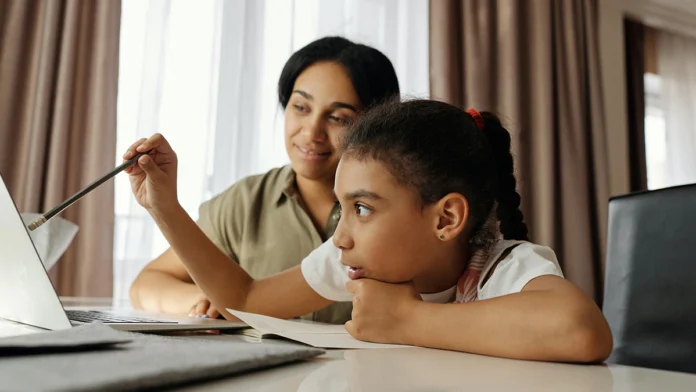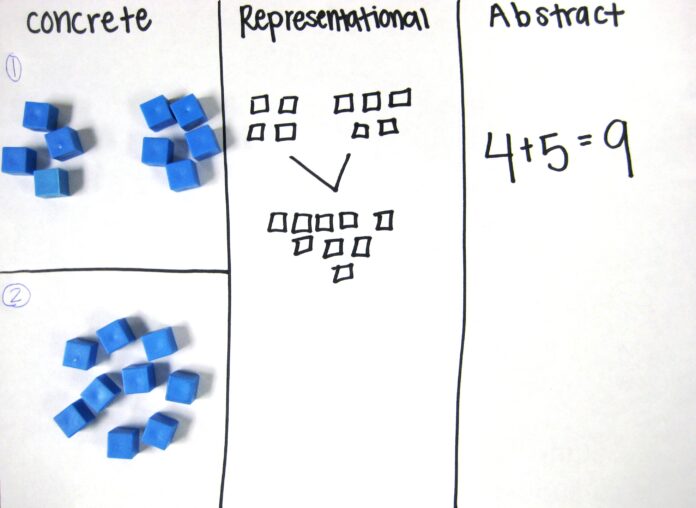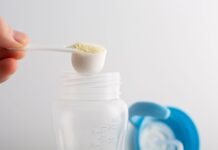Named after the country where this unique and unparalleled learning system first developed, E Singapore Math curriculum is one of the cutting edge ways to learn and develop progressive skills for the 21st century.
The ESingaporeMath program was developed in the 80s of the 20th century by Singaporean scientists and economists. The role of the latter was of no small importance in training financiers, economists, and sales specialists of the future. Many studies have proven that this approach (keep on reading to find out more) helped the state emerge from a severe crisis and begin to prosper in record time.

The main things that distinguish Singapore Math from world standards are the following approaches:
- philosophy instead of cramming,
- depth instead of width,
- working with long-term memory, not short-term,
- slow assimilation of material without multiple repetitions,
- going beyond mathematics (critical thinking, communication, modeling),
- developing the skill of self-study of concepts and drawing up hypotheses.
Together, all these elements combine to a single approach – CPA – which consists of three stages (Concrete, Pictorial, Abstract) and designed for students to smooth transition from physical perception of objects to abstract items when solving problems and equations.
Although, before the well-known events of 2024, the parents of schoolchildren and preschool children doubted the choice of this program for their toddlers due to its unusual nature, now, with the forced transition to distance learning, many of them, nevertheless took the risk, and, as statistics show, did not regret it.
This article provides an in-depth overview of the features of Singapore Math to help parents understand, if this curriculum is suitable for home education for their children and if they can excel at it.
Concrete, Pictorial, Abstract

Mathematics is the science of abstract elements – numbers, degrees, square roots, etc. That is why Singaporean scientists have developed an approach (CPA) that allows children to master this abstract world processes through a smooth shift from the physical world, which they are familiar with. Comparing objects from the surrounding world, children can visually “think out” their abstract representation as a whole, or particular elements.
Concrete CPA Stage
The concrete stage is the practice stage. At this stage, students use physical objects to model tasks. For example, addition and subtraction is explained using examples of small toys, fruits, cards, etc.
For instance, if the task involves adding pieces of fruit, children can first work with real fruit, and then repeat the operations in mind.
Pictorial CPA stage
The pictorial stage is the “visual” stage. By adding visual effects such as diagrams, graphs, animations, teachers set new tasks for students – to find solutions only by visualizing the object, without physical contact. Drawing is also a common practice at this stage. If the student finds it difficult to perform a mathematical operation, then he/she can draw the composite elements and “see” the solution.
Abstract stage CPA

An abstract stage is a “symbol” stage. This is where math signs (+, -, *, /) and concepts such as degrees, fractions, negative numbers, and infinity are introduced. Students who have successfully reached this stage can already independently operate numbers and figures without the need to turn to physical objects.
Post-CPA stage
After mastering these three stages, students can move on to more complex concepts and skills such as critical thinking, modeling, communication, hypothesis building, and finding new methods for solving common problems.
Pros of Singapore Math
The main benefits and success factors of the Singapore Math are these three points:
- A spiral approach to learning – new knowledge and skills are learned on the basis of those already acquired, moving only up a spiral, without repetition.
- Visualization – children from the beginning “see” the meaning of all equations, tasks and operations. In other words, they clearly understand what division or addition is.
- High engagement – the learning process is built in such a way that yawning in the classroom simply will not work, just as you will not be able to complete the lesson without consolidating the material. At the end of each section, a placement test is carried out, which allows you to assess progress and identify gaps.
Also, a key role in the success of the program is played by highly qualified teachers who are themselves fully trained in both the world standard math curriculum and the Singapore Math.
Challenges of Singapore Math

There are not so many difficulties of this amazing program for students. Rather, they are relevant for countries that are trying to implement it into the school curriculum, but often it’s impossible because of the small number of competent teachers, as well as due to discrepancies in examination standards.
However, in 2024, these obstacles are gradually dissipating due to the expansion of borders through the shift to the online space. Teachers can explain lessons right from where they are, and new professionals do not have to travel to Singapore to become a professional and start teaching.
Parents choosing this for their children also need not worry that their toddler will lag behind peers. Quite the opposite. New prospects for higher education and career open up in front them. Exams are also not a hindrance, because children studying Singapore Math learn all the concepts every average child familiar with. The only difference is the approach. In addition, more and more exams are now being adapted to this curriculum.
Why to choose Singapore Math for Home-Schooling?
First, you open up greater possibilities and vision for your child. As he/she grows up, these skills will stay with them for life, and they are applicable in almost all areas of work and life.
Second, you provide your child with personalized learning in a comfortable home environment, and you can choose the speed and depth of learning that suits your little one.
Third, it’s cost-effective because you don’t have to constantly hire tutors to repeat the same material over and over. You are investing in fundamental building of a lasting future for your child.
Conclusion

With sufficient preparation of Singapore Math resources, exploring the program offered by each teacher and testing it on your child, you will be able to provide a seamless learning process and the development of competencies, develop a multifaceted mindset, and also build the foundation for your specialist of the future who can navigate in ever-changing professional and scientific environment and not be afraid of crises, chaos, turbulence and maladjustment.
The main thing to remember as a parent is to start curriculum research well in advance of your child’s school age. Listen to your child, understand his/her perception and the manner of assimilation of the material. This will help you to avoid the rush and find the perfect solution.





![Calgary’s Hottest Neighborhoods for Luxury Homebuyers [2024]](https://thewashingtonote.com/wp-content/uploads/2024/04/Calgary-324x160.png)



